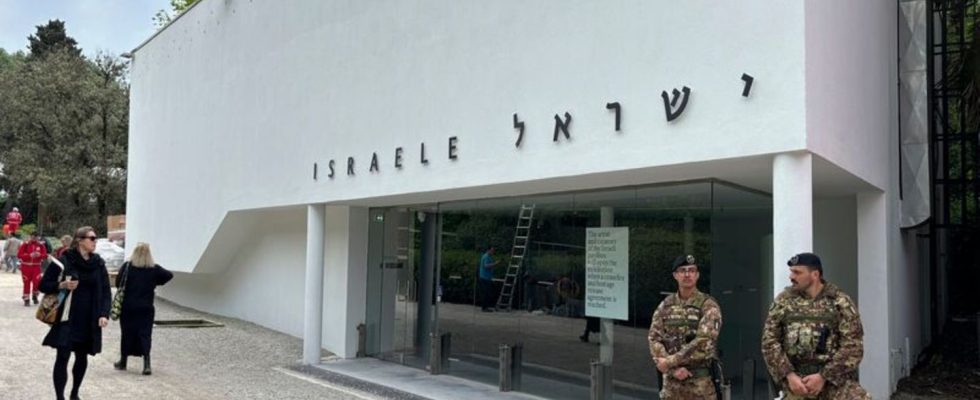Exhibitions
Venice Art Biennale: Israeli pavilion does not open
Italian soldiers at the Israeli National Pavilion at the Venice Biennale of Contemporary Art. photo
© Colleen Barry/AP/dpa
Israel’s pavilion at the Venice Art Biennale will not open as planned – a decision by the exhibiting artist and curators. They are demanding a ceasefire and the release of the Hamas hostages.
The Israel Pavilion at the According to the exhibiting artist, the Venice Art Biennale will not open as planned.
The artist and curators of the pavilion would open the exhibition when an agreement on a ceasefire in the Gaza war and the release of the hostages held by the Islamist Hamas is reached, according to the artist Ruth Patir’s website. The US newspaper “New York Times” reported that the decision was also announced on a sign in front of the closed pavilion.
The Venice Art Biennale opens on Saturday. Today, press representatives will be given an insight into the countries’ pavilions. The biennale takes place from April 20th to November 24th in the northern Italian lagoon city. Along with the documenta in Kassel, it is considered the most important presentation of contemporary art.
“We can’t take it anymore”
“The artist and curators’ decision is not to cancel themselves or the exhibition, but to show solidarity with the families of the hostages and the larger community in Israel that is demanding change,” said the statement on Patir’s website further. “I hate it, but I think it’s important,” the New York Times quoted Patir as saying.
Patir wrote in an Instagram story shortly after it was announced that the pavilion would not be opening that she had the feeling that it was not the time for art and that she had to believe that it would return. “And when I’m offered such a remarkable stage, I want to take advantage of it.” That’s why she decided not to open the pavilion until there was a ceasefire and the hostages from Gaza were released. “That was our decision and we stand by it,” Patir continued.
She rejects a cultural boycott. But: “I prefer to raise my voice with those I support in their cry: ceasefire now, bring people back from captivity. We can’t take it anymore.”
Curator Tamar Margalit told the New York Times that visitors could see one of Patir’s video works through windows of the closed pavilion.
Art Biennale overshadowed by the Gaza war in the run-up to it
The opening of the Israeli pavilion at this year’s art biennale was eagerly awaited in advance. Like many other cultural events, the art biennale was overshadowed in advance by the Gaza war.
Thousands of people, including many artists, had already called for Israel’s exclusion from this year’s art biennale in a petition at the end of February. It is unacceptable to present art from a state that is currently carrying out atrocities against Palestinians in Gaza, an open letter published online by the Art Not Genocide Alliance (ANGA) said at the time. They accuse Israel of genocide. According to the activist group, more than 23,000 people have now signed.
More than 1,200 people were killed in the massacre by the Palestinian terrorist organization Hamas and other groups in Israel on October 7th. Numerous people from Israel were also kidnapped as hostages in the Gaza Strip. 133 people are still being held there, only some of whom are probably still alive. Israel responded with massive air strikes and a ground offensive. In view of the high number of civilian casualties and the catastrophic humanitarian situation in the Gaza Strip, Israel is increasingly criticized internationally – including by close partners.

